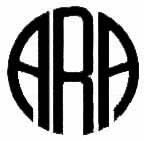 W
WThe American Romanian Academy of Arts and Sciences (ARA) is a scholarly organization dedicated to the analysis, study and dissemination of Romanian contributions and accomplishments. To enhance these efforts, ARA combines Western and Romanian intellectual traditions, encourages communications and serves as a point d'appui in the Western World for Romanian academics and intellectuals. ARA is duly incorporated in the State of California as a non-profit tax-exempt organization. It is organized in conformity with the pertinent laws and regulations of the state of California and the United States of America. ARA conducts and supports multidisciplinary studies in exact sciences, mathematics, natural sciences, and also supports the arts, linguistics, literature, political studies and sociology. As an institution its main goal is to foster cultural exchanges between the American and Romanian cultures. ARA was founded in California in 1975 by a group of American-Romanians, and in 2014 has 119 elected members, 81 corresponding members, and 59 honorary members.
 W
WCenaclul Flacăra was a cultural and artistic movement in the Socialist Republic of Romania led by poet Adrian Păunescu. Between 1973 and 1985, it organized shows and concerts which, although rebellious in comparison to the official entertainment, promoted Nicolae Ceaușescu's cult of personality and the ideology of National Communism.
 W
WCântarea României was an annual national cultural festival in the Socialist Republic of Romania between 1976 and 1989 intended to promote ideologically-approved artistic manifestations, featuring both professional and amateur artists from across the country. Being part of Ceaușescu's policies to promote National Communism in Romania, the festival used folklore and it had a role in shaping the national identity of the Romanians and the view of Romanian history.
 W
WDracula tourism is a type of cultural tourism involving travel to sites associated with Dracula and his real or imaginary travels. There is Dracula Tourism mainly in Transylvania, Romania but also in Ireland and in the United Kingdom.
 W
WThe George Enescu National University of Arts is a public university in Iași, Romania, founded in 1860. It was named in honor of the composer George Enescu.
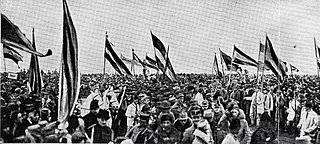 W
WGreat Union Day is a national holiday in Romania, celebrated on 1 December, marking the unification of Transylvania, Bessarabia, and Bukovina with the Romanian Kingdom in 1918, something that is known as the Great Union. This holiday was declared after the Romanian Revolution and commemorates the assembly of the delegates of ethnic Romanians held in Alba Iulia, who declared the Union of Transylvania with Romania.
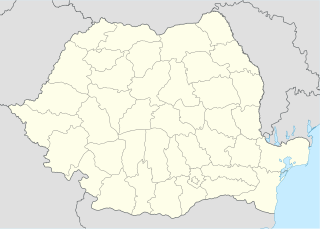 W
WGumuțeasca or Gomuțeasca is an argot used exclusively in the commune of Mărgău in Cluj County, Romania. The people of Mărgău traditionally worked with glass for centuries, making mirrors, windows and religious icons and selling them to other parts of the country such as Bucharest, the capital of Romania, or Brăila and Constanța. The people of Mărgău wandered all over the country to practice their profession, and in order to warn each other of possible dangerous people on the way to cities or to be able to put prices to their glass products without outsiders being able to understand them, they invented a form of speech that only they could understand: Gumuțeasca.
 W
WMonument istoric, a "historic monument", is the Romanian term of designation for National Heritage Sites in Romania.
 W
WMucenici is a Christian feast of the 40 Martyrs of Sebaste, a traditional holiday in Romania and Moldova. It coincides with the start of the agricultural year. Those who observe this holiday clean their households and light fire to their garbage collected from their homes, to bring warmth outside.
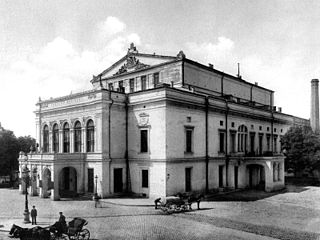 W
WThe history of opera in Romania dates back to the 18th century when French, Italian, and German touring companies began performing the standard European repertoire of the day in the main cities of Romania. Home-grown opera companies both professional and amateur began forming in the 19th century. In 1843 a purpose built theatre for the performance of Italian opera was established in Bucharest. Its inaugural performance was Bellini's Norma. Opera was also performed by the students at the conservatory established by The Philharmonic Society of Bucharest.
 W
WThe following is a list of public holidays in Romania. According to Romanian law, Romania had 51 public holidays as of 2011, which cover 14% of the days of the year in the country.
 W
WThe Romanian Academy is a cultural forum founded in Bucharest, Romania, in 1866. It covers the scientific, artistic and literary domains. The academy has 181 acting members who are elected for life.
 W
WThe Romanian Academy in Rome is a research institution under the aegis of the Romanian Academy, founded in 1920 by an initiative of archaeologist Vasile Pârvan and historian Nicolae Iorga. The site of the Romanian Academy in Rome is on the Pincio, near the Villa Borghese gardens, in Rome, Italy. The villa housing the Romanian Academy in Rome dates from 1933 and was designed by Petre Antonescu.
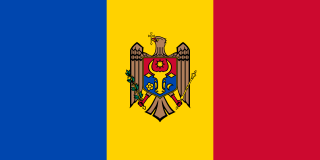 W
WRomanian dress refers to the traditional clothing worn by Romanians, who live primarily in Romania and Moldova, with smaller communities in Ukraine and Serbia. Today, the vast majority of Romanians wear modern style dress on most occasions, and the garments described here largely fell out of use during the 20th century. However, they can still be seen in more remote areas, on special occasions, and at ethnographic and folk events. Each historical region has its own specific variety of costume.
 W
WThe Romanian Orthodox Church, or Patriarchate of Romania, is an autocephalous Eastern Orthodox church in full communion with other Eastern Orthodox Christian churches, and one of the nine patriarchates in the Eastern Orthodox Church. Since 1925, the church's Primate bears the title of Patriarch. Its jurisdiction covers the territories of Romania and Moldova, with additional dioceses for Romanians living in nearby Serbia and Hungary, as well as for diaspora communities in Central and Western Europe, North America and Oceania. It is the only autocephalous church within Eastern Orthodoxy to have a Romance language for liturgical use.
 W
WVarious lists of the Seven Wonders of Romania have been compiled from past to the present day, to catalogue Romania's most spectacular manmade structures.
 W
WThe shepherd's axe is a long thin light axe of Eurasian origin used in past centuries by shepherds in the Carpathian Mountains and in other territories which comprise today Slovakia, Czech Republic, Poland, Ukraine, Romania and Hungary. The features of a shepherd's axe combine a tool with a walking stick, that could be used as a light weapon. It has symbolic historical and cultural connotations and is still used as a prop in many traditional dances, for example the odzemek. Among its precursors is a Hungarian battle axe called fokos.
 W
WAfter World War II, socialist realism, like in the Soviet Union, was adopted by a number of new communist states in Eastern Europe, including Romania. This was accompanied by a series of organizational moves, such as the incarceration of numerous poets linked to the fascist paramilitary organization, the Iron Guard. Between 1948 and 1956, Romania's pre-existing system of values and corresponding cultural institutions were restructured in an attempt to create a "new socialist man". As in the political and economic spheres, cultural reforms were sometimes forcibly imposed, intellectuals' links with the West were severed, and the Romanian Academy and long-standing professional organizations such as the Society of Romanian Writers or the Society of Romanian Composers were dissolved and replaced with new ones, from which anti-communist members were removed. The works of antisemitic authors, such as Octavian Goga, Nichifor Crainic and Mircea Vulcănescu, were also banned.
 W
WTotoiana ("Totoian"), also known as the "Totoian language" or the "inverted language", is a speech form used in the village of Totoi in Alba County, Romania. It is unique to the village and not spoken in the other villages that form part of the commune of Sântimbru, to which Totoi belongs. Totoiana was created with the purpose of being unintelligible for normal Romanian speakers, although its origins or the reason why this would be needed are unknown. It has been said that, since the inhabitants of Totoi were good wood artisans who traded with their products, Totoiana could have been created so that other merchants could not understand them. However, George Cadar, a member of the Romanian Association of Semiotic Studies, claims to have recorded a similar form of speech far from Alba County, although he did not elaborate on this. Some also say it was created by servants so that their boyar employers in the nobility class could not understand them.
 W
WThe Transylvanian Association for Romanian Literature and the Culture of the Romanian People is a cultural association founded in 1861 in Sibiu (Hermannstadt). It had an important role in the cultural life and the movement of national awakening for the Romanians in Transylvania.
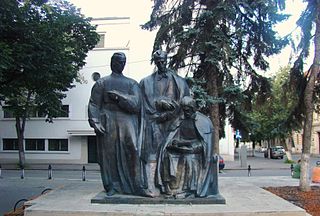 W
WThe Transylvanian School was a cultural movement which was founded after part of the Romanian Orthodox Church in Habsburg-ruled Transylvania accepted the leadership of the pope and became the Greek-Catholic Church. The links with Rome brought to the Romanian Transylvanians the ideas of the Age of Enlightenment. The Transylvanian School's major centres were in the cities of Balázsfalva, Nagyvárad, Lugos and Belényes.
 W
WThe Romanian Filmmakers Union, known as UCIN, is the continuation since 1990 of the Communist-era Asociaţia Cineaştilor din România. It is an autonomous, non-governmental body with an elected leadership, concerned with "the protection of the creative and professional activities, of the moral and material interests of the Romanian filmmakers." They award the Premiile Uniunii Cineaştilor din România, much as the U.S. Academy of Motion Picture Arts and Sciences gives the Academy Awards.
 W
WThe union of Transylvania with Romania was declared on 1 December 1918 by the assembly of the delegates of ethnic Romanians held in Alba Iulia. The Great Union Day, celebrated on 1 December, is a national holiday in Romania that commemorates this event. The holiday was established after the Romanian Revolution, and commemorates the unification not only of Transylvania, but also of Bessarabia and Bukovina and parts of Banat, Crișana and Maramureș with the Romanian Kingdom. Bessarabia and Bukovina had joined with the Kingdom of Romania earlier in 1918.
 W
WThe Vasile Pârvan Institute of Archaeology is an institute of the Romanian Academy, located in Bucharest, Romania and specialized in prehistory, ancient history, classical archeology and medieval history. Since 1999, the director of the institute is the historian and archeologist Alexandru Vulpe, a member of the Romanian Academy. The Institute is located in Macca house, on Henri Coandă street, no. 11, Bucharest.
 W
WThe United Nations Educational, Scientific and Cultural Organization (UNESCO) World Heritage Sites are places of importance to cultural or natural heritage as described in the UNESCO World Heritage Convention, established in 1972. Cultural heritage consists of monuments, groups of buildings, and sites. Natural features, geological and physiographical formations, and natural sites which are important from the point of view of science, conservation or natural beauty, are defined as natural heritage. Romania accepted the convention on 16 May 1990, making its historical sites eligible for inclusion on the list.